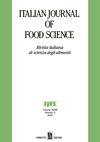循环经济在酿造链
IF 3.3
4区 农林科学
Q2 FOOD SCIENCE & TECHNOLOGY
引用次数: 6
摘要
本综述的主要目的是检验循环经济概念在酿造链中的适用性。通过分析啤酒酿造过程,可以确定主要的啤酒厂废物形成和使用的包装材料,以及它们的组成和产量范围。为了减少包装材料对啤酒碳足迹的贡献,有必要用更轻的、可重复使用的或可回收的容器取代目前使用的单向容器。即使考虑到啤酒消费阶段的贡献,也没有关于对环境影响较小的啤酒包装格式的明确解决方案。直接管理液体食品的聚对苯二甲酸乙二醇酯(PET)包装可以使100%回收的PET薄片重新转化为食品级瓶,最大限度地减少其他非食品用途的回收利用。啤酒废物在营养和生物技术领域的无数潜在用途在实验室进行了测试,而不考虑任何成本效益或市场分析。这主要是因为干啤酒糟(BSG)的估计市场价格比常规木质纤维素残留物高出约450%。在文献中欢呼的所有替代用途似乎对发表文章更有用,而不是为所有啤酒厂废物定义任何经济上可行的再利用程序。由于它们的高水分含量,这些废物是如此容易腐烂,以至于阻止它们在人类食物链中的安全使用。目前,它们在动物饲养中的原样使用是一种处理方法,不仅经济可行,而且能够将玻璃瓶包装啤酒的温室气体负荷减少约三分之一(GB)。并非偶然,大多数工业和手工酿酒厂都采用这种方法。本文章由计算机程序翻译,如有差异,请以英文原文为准。
Circular economy in the brewing chain
The main aim of this review was to check for the applicability of the concept of circular economy to brewing chain. By analyzing the beer brewing process, it was possible to identify the main brewery wastes formed and packaging materials used as well as their range of composition and yields. In order to reduce the contribution of packaging material to the carbon footprint of beer, it would be necessary to replace one-way containers used nowadays with lighter, reusable, or recycled ones. Even if the contribution of beer consumption phase was taken into account, there was no definitive solution about the less environmentally impacting beer packaging format. The direct management of polyethylene terephthalate (PET) packaging for liquid foodstuffs could make available 100% recycled PET flakes to be reconverted into food-grade bottles with minimum downcycling to other non-food usage. The countless potential uses of brewery wastes in nutritional and biotechnological fields were tested in laboratory by disregarding any cost–benefit or market analysis. This was mainly because the estimated market price of dried brewer’s spent grain (BSG) resulted to be about 450% higher than that of conventional lignocellulose residues. All the alternative uses hailed in the literature appeared to be more useful for publishing articles than for defining any economically feasible reusing procedure for all brewery wastes. Owing to their high moisture content, such wastes are so perishable as to prevent their safe usage in the human food chain. Currently, their use as-is in animal feeding is the disposal method not only economically feasible but also able to reduce the greenhouse gas load of beer packed in glass bottles (GB) by about one-third of that associated with packaging materials. Not by chance, it is practiced by most industrial and craft breweries.
求助全文
通过发布文献求助,成功后即可免费获取论文全文。
去求助
来源期刊

Italian Journal of Food Science
工程技术-食品科技
CiteScore
4.20
自引率
0.00%
发文量
33
审稿时长
>36 weeks
期刊介绍:
"Italian Journal of Food Science" is an international journal publishing original, basic and applied papers, reviews, short communications, surveys and opinions on food science and technology with specific reference to the Mediterranean Region. Its expanded scope includes food production, food engineering, food management, food quality, shelf-life, consumer acceptance of foodstuffs, food safety and nutrition, energy and environmental aspects of food processing on the whole life cycle.
Reviews and surveys on specific topics relevant to the advance of the Mediterranean food industry are particularly welcome.
 求助内容:
求助内容: 应助结果提醒方式:
应助结果提醒方式:


